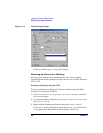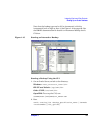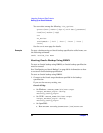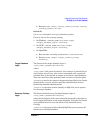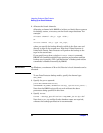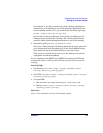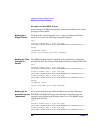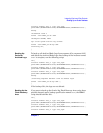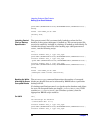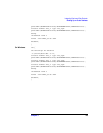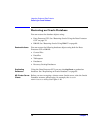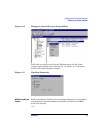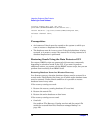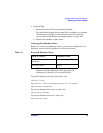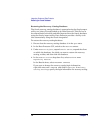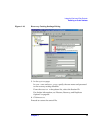
Integrating Oracle and Data Protector
Backing Up an Oracle Database
Chapter 168
parms'ENV=(OB2BARTYPE=Oracle8,OB2APPNAME=ORACL,OB2BARLIST=ora1)';
backup
format 'ora1<ORACL_%s:%t>.dbf'
recovery area;
}
Including Control
File in a Backup
Specification
The current control file is automatically backed up when the first
datafile of the system tablespace is backed up. The current control file
can also be explicitly included in a backup, or backed up individually. To
include the current control file after backing up a tablespace named
COSTS, run the following script:
run {
allocate channel 'dev_0' type 'sbt_tape'
parms'ENV=(OB2BARTYPE=Oracle8,OB2APPNAME=ORACL,OB2BARLIST=ora1)';
allocate channel 'dev_1' type 'sbt_tape
'parms'ENV=(OB2BARTYPE=Oracle8,OB2APPNAME=ORACL,OB2BARLIST=ora1)';
allocate channel 'dev_2' type 'sbt_tape'
parms'ENV=(OB2BARTYPE=Oracle8,OB2APPNAME=ORACL,OB2BARLIST=ora1)';
backup
format 'ora1<ORACL_%s:%t>.dbf'
(tablespace COSTS current controlfile);
}
Backing Up While
Allowing for Some
Corrupted Blocks
The set maxcorrupt command determines the number of corrupted
blocks per datafile that can be tolerated by RMAN before a particular
backup will fail.
If a backup specification named ora1 backs up the database and allows
for up to 10 corrupted blocks per datafile /oracle/data1.dbs (UNIX
systems) or C:\oracle\data1.dbs (Windows systems), then the
appropriate RMAN script would be:
On UNIX
run {
set maxcorrupt for datafile
'/oracle/data1.dbs' to 10;
allocate channel 'dev_0' type 'sbt_tape'
parms'ENV=(OB2BARTYPE=Oracle8,OB2APPNAME=ORACL,OB2BARLIST=ora1)';
allocate channel 'dev_1' type 'sbt_tape'



